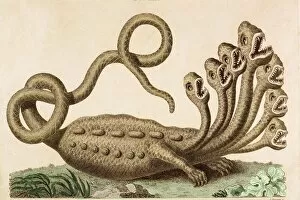Albertus Seba Collection
Albertus Seba, a renowned naturalist and collector from the 18th century, left an indelible mark on the world of scientific illustration
All Professionally Made to Order for Quick Shipping
Albertus Seba, a renowned naturalist and collector from the 18th century, left an indelible mark on the world of scientific illustration. His passion for documenting the wonders of nature led him to create stunning artworks that continue to captivate us today. One of his most notable achievements was exposing the fraudulent claims made by The Hamburg Hydra Linnaeus. Through meticulous research and examination, Seba revealed that this so-called "hydra" was nothing more than a cleverly constructed hoax. However, it was not just in debunking myths that Seba excelled. He also had a keen eye for capturing the intricate beauty of creatures such as snakes. His snake skeleton illustrations showcased their delicate yet powerful forms, providing valuable insights into their anatomy. Seba's fascination with snakes extended beyond mere skeletal renderings; he also depicted them in all their vibrant glory. His detailed illustrations brought these slithering creatures to life on paper, showcasing their diverse colors and patterns. In addition to his work on snakes, Seba delved into other realms of marine life as well. His depictions of seven squid and octopuses offered glimpses into the mysterious underwater world, highlighting their unique characteristics and mesmerizing movements. But it wasn't only sea creatures that caught Seba's attention; he also dedicated himself to studying insects. From beetles to winged insects, his illustrations captured every minute detail with precision and artistry. These 18th-century artworks serve as invaluable records of insect diversity during that time period. Seba's love for beetles is evident through multiple illustrations where he meticulously portrayed these fascinating creatures in various poses and angles. Each beetle seemed almost lifelike under his skilled hand. Aside from animals, Seba had an extensive collection of shells which he carefully documented through detailed drawings. These collections served not only as aesthetic marvels but also provided scientists with crucial information about different species' morphology and distribution.

















